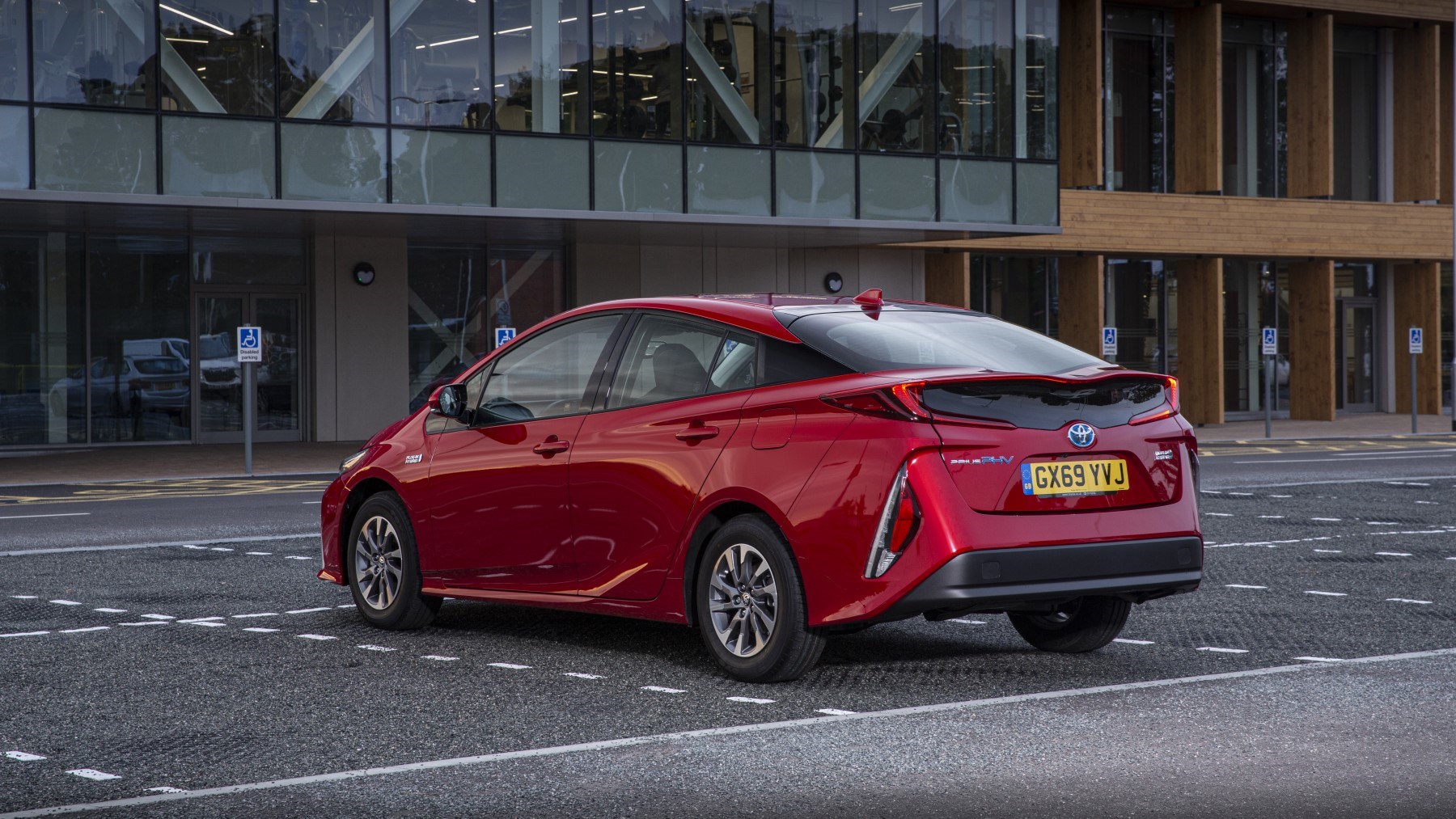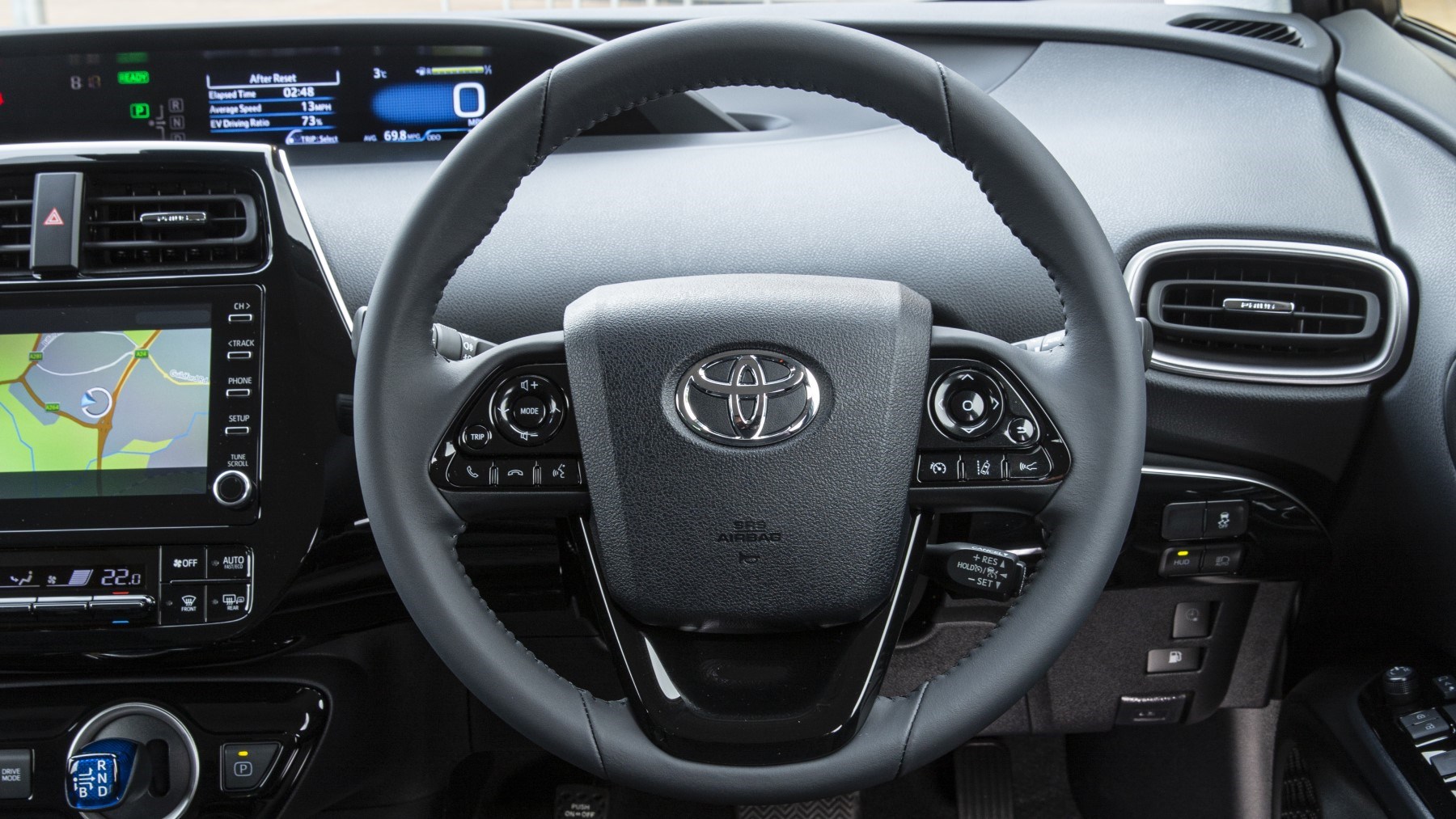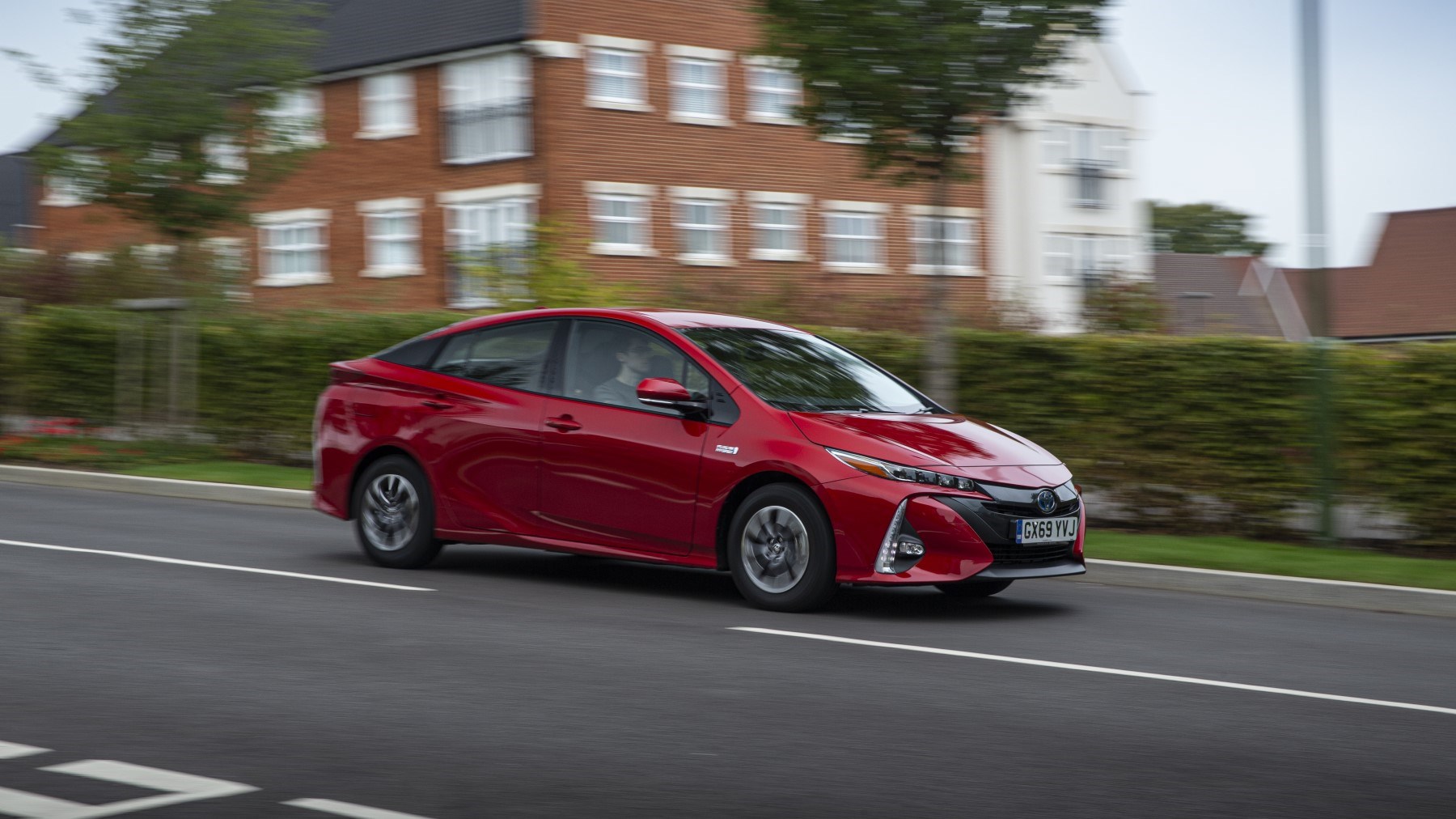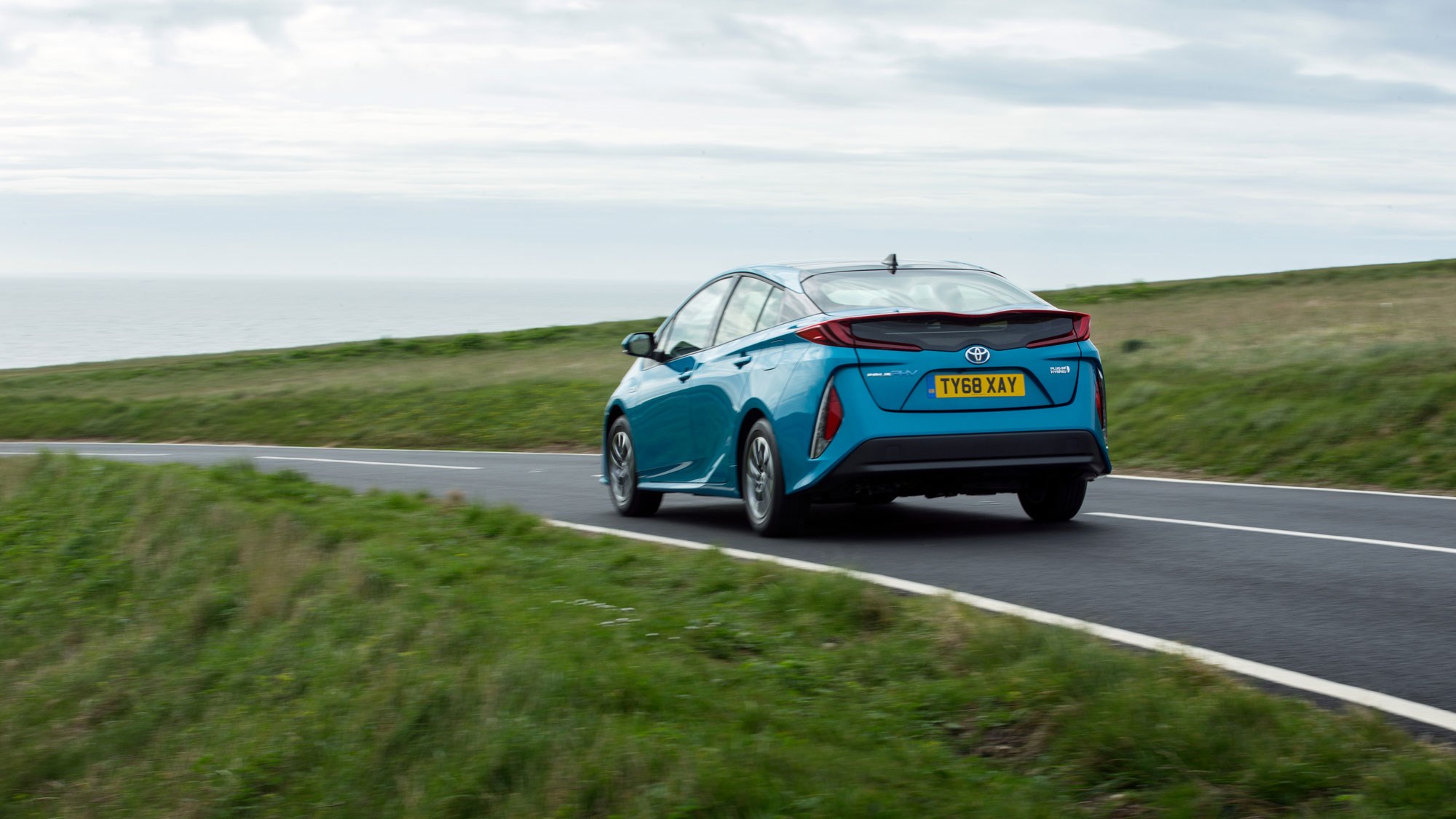► New Toyota Prius Plug-in tested
► A claimed 217mpg, 30+ mile EV range
► The best Prius yet?
The Toyota Prius Plug-in Hybrid is, as the name might suggest, very closely related to the standard Prius. Unlike that car, though, it has a large battery pack and the facility to charge up from the mains – giving it the ability to complete around 34 miles on electric power alone. Looking at this review later? You’ll be pleased to know this one also makes our list of the best used hybrid cars in 2023.
In theory, that makes it the best of all worlds. Run it as an EV during the week, but keep the petrol in reserve in case you need to do a long trip. And when your batteries run down, the Plug-in operates just like a normal Prius self-charging hybrid – shuffling between power sources as the need dictates and returning MPG figures of around 60 with ease.

In the transition to plug-in Toyota’s even tamed the Prius’s wild, manga-tastic styling, meaning this car blends into the traffic rather better than its sibling.
Best hybrids and plug-in cars
Prius Plug-in: what’s new?
Obviously, there’s a larger battery pack under the floor. This means just two rear seats are available and the boot floor has been significantly raised, leaving a wide and flat but very shallow luggage space.
Charge the car up fully and you’ll get 34 miles of pure-electric range. Shuffle the power around and models on the smallest wheels claim to achieve a staggering 217mpg. Your mileage will vary, obviously, depending on how much of each power source you use.
The official CO2 figure of 29g/km, however, is super-low no matter which way you look at it.

How doew the plug-in Prius drive?
The new plug-in model adds a significant amount to the purchase price – but in exchange you get three times the fuel economy. Stick to short urban journeys and you should be able to squeeze more than 30 miles from each charge, meaning minimal fuel bills and a silent, smooth drive.
For best results, serve in EV mode; press the respective button to put the Prius Plug-in’s petrol engine into lockdown and you almost get a BMW i3-matching feeling of responsiveness and a potential all-electric top speed of 84mph. It may not have the German car’s speed, but the Prius feels more than fast enough for urban settings, and it’s surprisingly agile around corners too – perfect for dodging London buses and maintaining momentum for maximum range.
And the hybrid mode?
Hybrid HV mode, meanwhile, juggles petrol power and electric energy for itself, while a super-pious EV City mode slashes the batteries power only calling on under-bonnet fossil fuel fireworks when you mash the throttle into the bulkhead. Handling is also impressively tidy with precise steering and no sense of the 120kg of batteries stuffed under the boot.

Cheapest hybrid cars
Owners also get a choice of three drive modes: Normal, Eco and Power. Normal feels suitably conventional, with the muscle to match something like a small turbo petrol Golf, with the CVT-induced high-rev engine noise only becoming obvious in Power mode, with a correspondingly sharper throttle response. Eco, meanwhile, feels much less responsive but you quickly acclimatise after a few miles.
Can I really achieve 217mpg?
Yes. And no.
Regularly plug in at home or at the office and you should be able to stick two fingers up to messrs Shell and BP with zero petrol consumption over suburban journeys up to around 30 miles long. Travel further, however, and you’ll be chowing through fuel at much faster rate.
Starting with a full battery we chalked up 104.6mpg over more than 100 miles, hitting a high of 122.8mpg over the first 80-odd miles and covering 58 miles on electric power alone. This did require monk-like restraint, though, with something around 70mpg more likely with a heavy right foot. Toyota itself claims that 83mpg is likely with a depleted battery.
How much does it cost to run a hybrid car?
Whatever, company car drivers should still be able to send their fleet manager into fits of delirium with colleague-humiliatingly small fuel receipts. More money-saving goodness comes in the form of the free home charger provided courtesy of a government grant and a Toyota top-up.

Plus, there’s a range-extending solar roof available on the entry-level car. Spec this and you can steal around 400 miles per year from the weak British sun, with juice being added to the batteries when parked up. Charge up normally, however, and you’ll have to wait two hours to get 65% charge.
Toyota Prius Plug-in verdict
The Toyota Prius Plug-in won’t get most petrolheads’ juices flowing, but rest assured that if the future comes in plug-in form, this is a damn sight more engaging drive than the Nissan Leaf. Interestingly, this Prius feels happiest in all-electric mode and does a good job of dashing around town.
It’s expensive, though, especially compared with the standard Prius, and the 360-litre boot is shallow. Unless you really have to have the most economical Prius, the standard car would better serve most people’s needs.